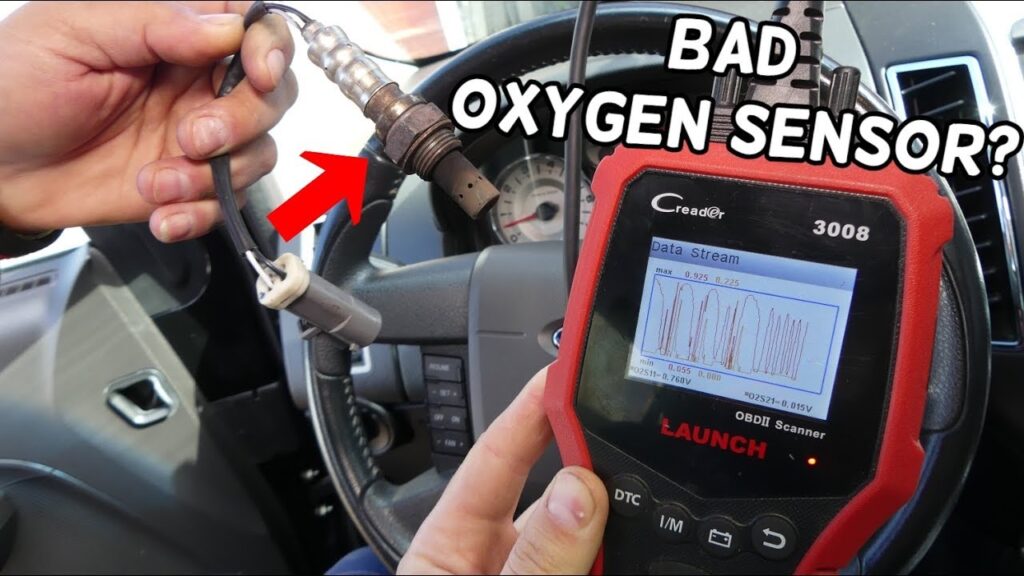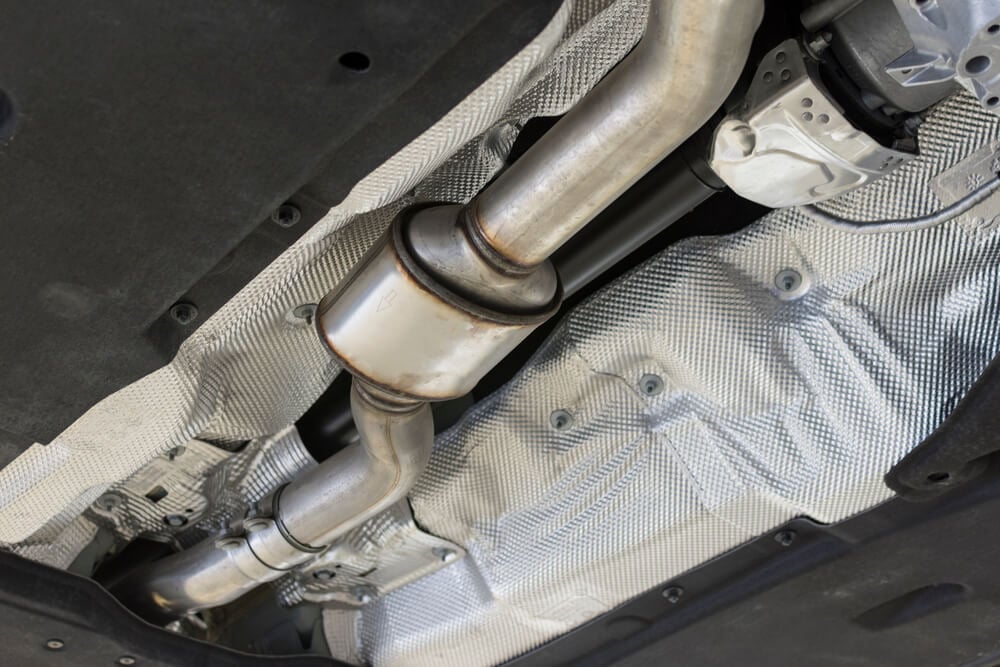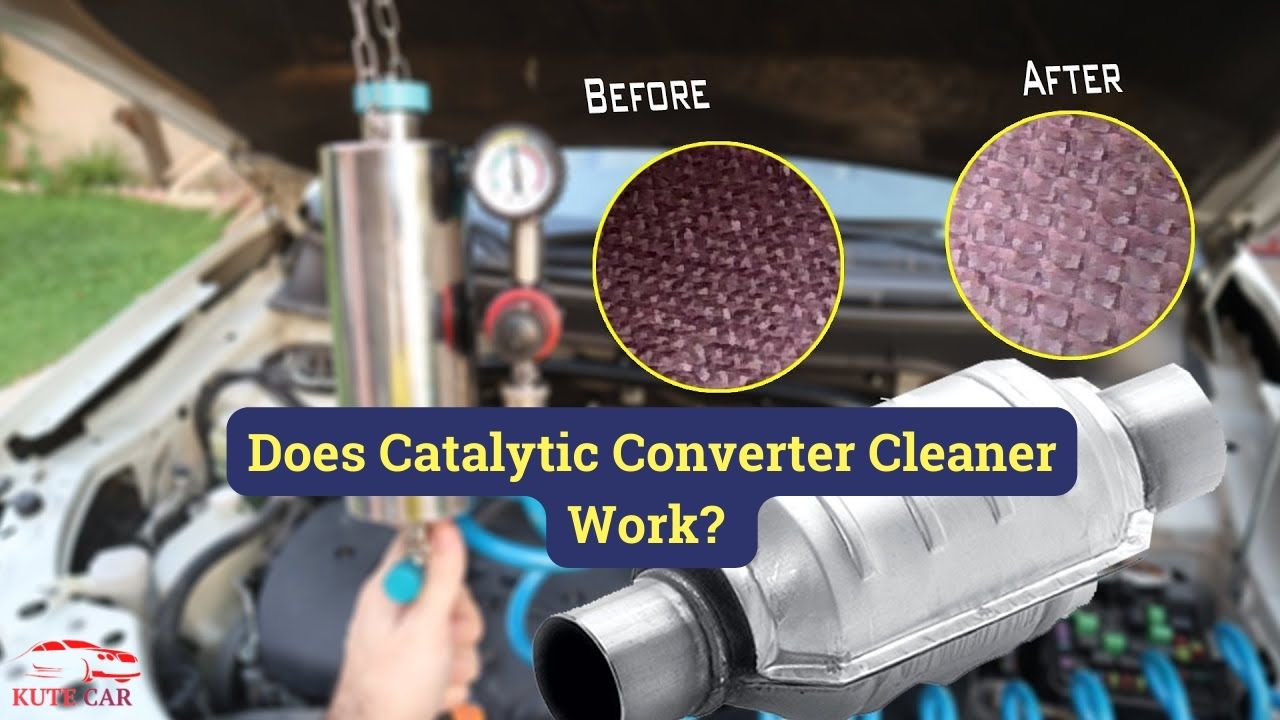Does catalytic converter cleaner work? Most of us make ourselves environmentally aware, but it’s unknown that the state of our car catalytic converters plays a major role in limiting dangerous emissions. As soon as they are clogged, the engine’s performance must be degraded, and more harmful gasses are released into the atmosphere.
Because they’re expensive pieces, some people are trying to fix them by applying these cleaners, but can they be unclogged or revived?
Let’s examine what catalytic converters are, how they function, and how catalytic converter cleaner works.
What is a catalytic converter cleaner?
A catalyst is part of a car’s engine which filters out poisonous carbon from its emissions. If the converter is damaged or clogged, a check engine light on your vehicle will be activated so you can tell if something’s wrong. You can repair the converter and avoid buying a new part if you can identify this problem before it happens, then use an additive that cleans gas tanks!
How to clean a catalytic converter?
In two methods, you will learn how to clean a catalytic converter. You will clean the Catalytic Converter without removing it with the 1st method. You remove the catalytic converter while you are using the second method. Therefore, whatever is necessary shall be done.
- Get enough catalytic converter cleaner and fuel. Choose a few liters of fuel in cans for your car and buy the very good catalytic converter cleaner you need. Some cleaners only work with gasoline and diesel engines, while others can do both.
- Use a cleaner to fill your fuel tank. You’ll find instructions for pouring a cleaner and the amount of fuel your vehicle needs on this label.
- Go for a drive. When you add the solution, turn on your car engine and go for a ride. Driving will help the cleaner circulate throughout your exhaust system. The packing of the cleaner indicates how much time it takes to drive for optimal effects.
Causes of the Catalytic Converter getting Clogged
However, the catalyst is directly connected to combustion that can lead to a variety of problems. The following are some examples of causes of the catalytic converter getting clogged:
Damaged body
The converter may be physically damaged by speed bumps, off-roading, braking over railroad tracks, rogue tires and other obstacles. If damage to the outer shell or inner components is suffered, the device may malfunction or fall apart.
Bad oxygen/lambda detection
It consists of sensors for the engine and exhaust system. These sensors are required to monitor oxygen levels to guarantee optimal vehicle performance continuously. Only the data they need to ensure things don’t get out of hand if their connection isn’t correct, there are faulty electrical connections, or it doesn’t work itself can be provided by these sensors!

Symptoms of Catalytic Converter Cleaners
1) Illuminated Check Engine Light
The most visible symptom of a defective catalytic converter is the light on the check engine. You may use an On-Board Diagnostic(OBD) scanner to determine if the catalytic converter is a cause when you see your check engine light on.
2) Trouble Starting the Car
The exhaust system is flooded with much smoke if the catalytic converter has been clogged. It may cause a lot of trouble or it can even be hard to get the car started. If the catalytic converter(CAT) system is blocked, your engine will likely stop and run for several seconds before it starts again.
Solutions of Catalytic Converter Cleaners
1. Back Pressure Test
You will need a back pressure gauge to carry out this test.
- Please start by removing the front oxygen sensor and replacing it with a back pressure gauge.
- Start the car and look at the reading of the back pressure gauge.
- It is normal to have a reading in the 0-3 pounds per square inch(PSI) range.
- Your catalytic converter is blocked when your readings are less than 8 pounds per square inch (PSI).
- Get the oxygen sensor back in place.
- It is essential that you have a knowledge of the vehicle’s engine during all three tests.
Contact a mechanic if you prefer to do something other than perform the diagnostic on your own.
2. Temperature Test
You will need any thermometer, such as an infrared or kitchen, to carry out the temperature test.
- Get your vehicle started, allowing it to reach the optimum operating temperature.
- To make it happen, take it for a short ride.
- Put your car in a neutral or parked position.
- Measure the temperature inside the intake pipe, which forms part of the catalytic converter.
- Repeat for the outlet pipe, which is connected to the rear of the converter.
Instructions to Clean a Catalytic converter without Eliminating
Pour the Catalytic converter cleaner into the fuel tank.

Check the cleaner manual to determine exactly how much cleaner should be poured into the fuel referred to in that manual. Ensure that the required quantity is applied to your vehicle type and engine. It’s only a portion of the product you use because it could be causing more problems with catalytic converters in some cases.
How to Improve the Performance of Catalytic Converter Cleaners
Improving the performance of catalytic converter cleaners can help optimize their effectiveness.
- Carefully read and adhere to the instructions provided by the cleaner manufacturer. Proper application and usage can significantly impact performance.
- Fuel system cleaners help remove carbon deposits from the entire fuel system, including the injectors and valves, improving overall performance.
- Taking your vehicle for occasional drives at higher speeds. It can help burn off accumulated carbon deposits in the catalytic converter.
- Regularly perform tune-ups, replace worn-out spark plugs, and clean or replace clogged air filters.
- Excessive idling can lead to incomplete fuel combustion and increased carbon deposits in the converter. Minimize idle time whenever possible by turning off the engine.
- Address engine issues promptly: If you notice any performance issues or check engine lights, address them promptly. Ignoring engine problems can lead to increased emissions and potential damage to the catalytic converter.
Technical and Advanced Tips for Maintaining Catalytic Converter Cleaners
Here are some technical and advanced tips for maintaining catalytic converter cleaners:
- Check the owner’s manual for the specific type of catalytic converter cleaner.
- Read the details and instructions on the product label carefully.
- Do not use catalytic converter cleaners with the worst catalytic converter.
- Be careful not to overfill the fuel tank with a catalytic converter cleaner.
- Ignore the use of catalytic converter cleaners in conjunction with other fuel additives.
- Choose a cleaner specifically designed for catalytic converters.
- Follow manufacturer instructions for proper application and usage.
- Use high-quality fuel that meets recommended specifications.
- Avoid using low-quality or contaminated fuel.
- Minimize excessive idling to prevent carbon buildup.
- Take your vehicle for occasional drives at highway speeds.
- Keep the oxygen sensor in good condition to ensure proper converter function.
- Regularly inspect the catalytic converter for physical damage or leaks.
- Use fuel additives designed to reduce carbon deposits in the converter.
- Perform regular engine maintenance, including spark plug replacement and air filter cleaning.
- Keep the engine properly tuned to minimize emissions and stress on the converter.
Here are some additional tips for maintaining your catalytic converter:
- Get regular oil changes.
- Avoid driving with a dirty air filter.
- Have your catalytic converter inspected regularly.
- Avoid driving through deep water or off-road conditions that can damage the converter.
- Monitor engine performance and address any issues promptly to prevent converter damage.
- Avoid using engine oil additives that may harm the catalytic converter.
- Store your vehicle in a clean and dry environment to minimize corrosion of the converter.
- Consult a professional mechanic for regular inspections and maintenance of the catalytic converter.
Importance of Catalytic Converter Cleaner
A catalytic converter cleaner is intended to clean a catalytic converter in an exhaust system. The effectiveness of the emission control system can be improved, and harmful pollutants reduced in exhaust gas emissions by regularly cleaning a catalyst during annual maintenance.
Does catalytic converter cleaner work?
There is no quick solution to that. In particular, since it contains additives to clean up carbon emissions from your engine’s fuel and exhaust systems, using one of those products is likely to cause an improvement in symptoms. They will only partially eliminate them or magically repair your damaged catalytic converter.
Conclusion
A defective catalyst can cause an entire series of problems for the engine, including overheating. To avoid additional damage, you must keep a close eye on the signs of flawed converters listed in the previous paragraph. You should contact a professional for advice if you are having problems with your Catalytic converter.
FAQ Regarding on Does catalytic converter cleaner work
Q.1) Are catalytic converter cleaners effective against all types of contaminants?
They may have limited effectiveness on oil residues, lead, or certain metals. In such cases, professional cleaning or replacement may be necessary.
Q.2) Are there any choices for catalytic converter cleaners for cleaning the converter?
Professional cleaning techniques, such as high-temperature baking or ultrasonic cleaning, can be functional in releasing stubborn deposits from the catalytic converter.
Q.3) How often should I use a catalytic converter cleaner?
The frequency of utilizing a catalytic converter cleaner relies on various aspects, including driving situations, fuel quality, and maintenance practices.




